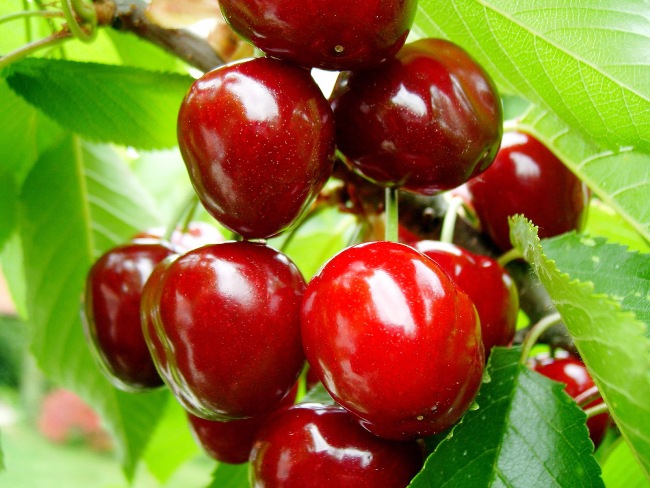A garden without a cherry, like a Russian hut without a furnace: it does not feed and it does not please the eye. Therefore, breeders deduce hundreds of varieties so that each garden has its own cherry tree. Such as, for example, Turgenevskaya cherry, or simply Turgenevka.
Table of contents
Description of cherry varieties Turgenevka
Let's start with a description of the variety. The cultivar of cherries “Turgenevka” was taken out by scientists from 1972 to 1979 at the All-Russian Research Institute for Breeding Fruit Crops. The tree reaches a height of 3–3.5 m.His crown is raised, reverse pyramidal. Shoots straight, medium length, brown. The bark of the trunk and the main branches also have a brown tint. Dark green leaves near a tree with a pointed tip and jagged edges.
In mid-May, the tree blooms profusely with white four-flowered inflorescences.
This variety begins to bear fruit in the 4-5th year. Up to 12 kg of fruits can be harvested from one young tree, up to 25 kg from an adult. The ripening period depends largely on the weather, but usually it falls on the 2nd decade of July. The regularity of the harvest, i.e., whether the cherry will bear fruit every year and how many years in a row, depends on care.
"Turgenevka" is regionalized in the Bryansk, Lipetsk and Voronezh, Kursk, Oryol and Belgorod regions, as well as in the Republic of North Ossetia. However, it is growing not only in these areas. Here the variety was tested and described. If you create all the necessary conditions for growth, the cherry will bear fruit in other regions. But first you need to familiarize yourself with such conditions.
Characteristics of the fruit
The fruits of “Turgenevka” are large (up to 4–5 g), of a wide heart shape. Fruits are dark red both outside and inside.Small bones are well separated from the juicy and dense flesh. The sweet and sour taste of fruits makes them indispensable for making jam, juice and compotes.
You may also be interested in the following articles about trees in the garden:
The advantages and disadvantages of the variety
"Turgenevka" is distinguished by winter hardiness, yield and fruit quality. However, due to the average frost resistance of flower buds under adverse conditions, the yield may decrease. In addition, it is partly self-fertile variety - it means that if you have one cherry, it will bear fruit, but there will be few fruits. Therefore, it is better to plant even self-bearing trees together with a tree of another variety, for example, with Favorite, Molodezhnaya or Lyubskaya.
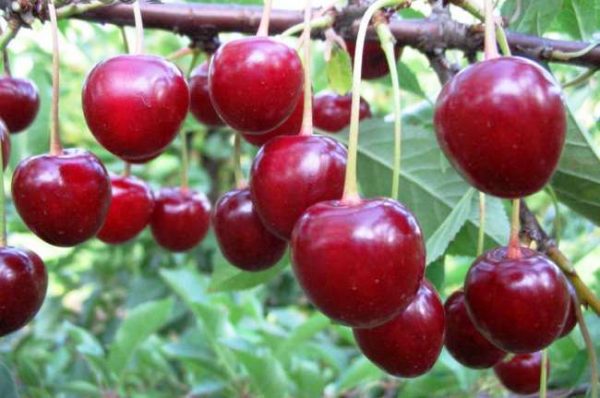
Selection of seedlings
The choice of seedlings is a responsible matter. To purchase a healthy tree, follow these rules:
- buy one or two year old seedlings from a trusted seller or manufacturer;
- Pay attention to the appearance: a healthy tree does not have any spots, the branches and roots must be whole;
- When buying in the spring, choose seedlings with dormant buds.
Landing place
Cherries love sunny, windless places. However, “Turgenevka” should be planted on the southern side carefully, because here the snow melts faster in spring, which means sap flow starts and the buds swell. Return spring frosts can ruin the next harvest.
The soil acidity for cherries should be with a pH of 5.5-7. The soils themselves are light, loamy or sandy.
It is better to plant cherries in spring, until the leaves have blossomed on it. You can plant it among other fruit trees, but not in place of the old cherry orchard. Groundwater should lie in the 1.5-2 m under the ground.
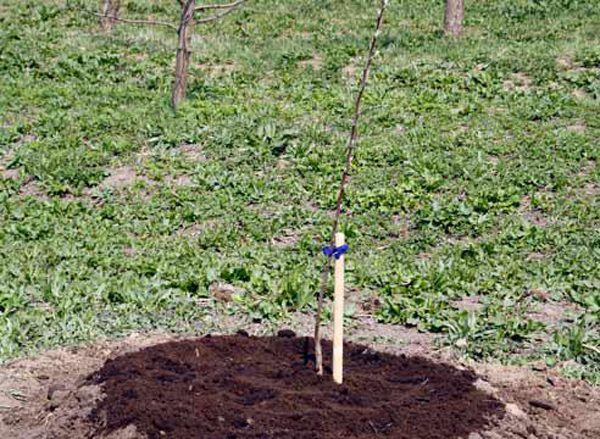
Landing stages
- Dig a hole 60 cm deep, 70 cm wide;
- Pour a mixture of humus (up to 2 buckets), ash (up to 1 kg) and mineral fertilizers (30 g of superphosphate, 20 g of potassium nitrate) in the middle of the pit;
- Set a planting stake to which you will then tie a tree;
- Put a seedling in a hole, straighten the roots and cover with earth;
- Tamp the earth tight so that all airy voids disappear;
- Form a hole with sides for watering;
- Sapling heavily water.
Care
With proper care cherry "Turgenevka" begins to bear fruit in the 4-5th year. With poor fruit care, you can also wait, but they will not be enough.
After planting the cherry requires frequent watering: at least once a week, 2 buckets of water. An adult tree is watered only during the drought period.
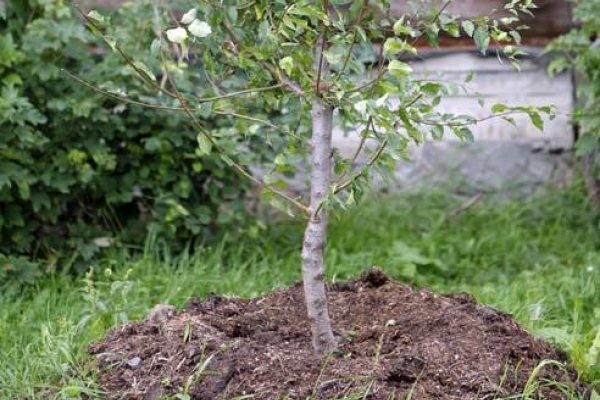
Top dressing is also necessary for regular and fruitful fructification:
- in the spring before the blooming of flowers, nitrogen is introduced into the soil (urea, ammonium nitrate);
- in spring, during flowering, nitrogen and organic fertilizers (chicken droppings, green fertilizers) can be applied to the soil;
- in the spring after flowering organic substances (manure, compost) are added to the soil to fill the berries;
- in the summer they make foliar fertilizing with nitrogen and bring organic matter into the tree trunk;
- In the fall, cherries need calcium, potassium and phosphorus.
Collection and storage
Cherries are perishable. No wonder they say: there were cherries, but they all came out.
Collection "Turgenevki" usually occurs July 5-15. A dry windless day is the best day to harvest. In the rain the fruits gain a lot of moisture and subsequently poorly stored.
If you need to keep the cherries fresh for a few days, but there is no place to store them, collect the fruit with the stem: so the pulp will not expire juice.
In the refrigerator, the harvested cherry will lie for about 20 days. If there are a lot of cherries, and you have a basement, where the air temperature is 8-12 °, place unwashed fruits without barrels in different containers. The layer should not exceed 5 cm. Thus, it will be possible to keep the crop fresh for 10-12 days.
And also cherries can be dried for the winter. Do it in three ways: dried berries in the sun, in the oven or in an electric dryer.
Crown formation
Crown formation is an important component in the life of a tree. Cherries grow rapidly, and therefore require annual thinning of the crown:
- after planting, identify the 5 strongest branches, remove the rest;
- treat wounds with garden pitch;
- for the 2nd year, cut off all the branches growing inside the crown;
- shorten the length of the branches and make the same;
- as you grow, form new skeletal branches, there should be 13-15 pieces.
- when the length of the trunk reaches 3.5 m, it should be cut so that the cherry does not grow anymore.
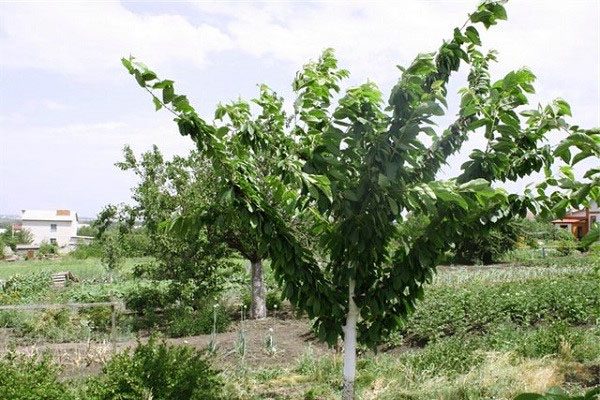
Diseases and pests
Cherry "Turgenevka" has an average resistance to the most common diseases of the stone fruit - coccomycosis and moniliosis. However, with poor care, a tree can suffer from any disease or pest.
In order to minimize the fight against diseases and harmful insects, it is necessary to carry out preventive spraying. From various pests fit biological insecticide "Fitoverm" or "Aktara". Strong immunity will help to resist diseases, and Zircon, HB-101 and Energen will strengthen it. And with diseases, and with pests will help cope preventive agent "Green soap".
However, prevention consists not only in timely spraying of trees, but also in their cleaning:
- remove infected leaves, as well as dried and damaged branches;
- remove and burn remnants of fruits, fallen leaves and branches;
- process with garden pitch all damaged areas of the bark;
- Loosen the soil regularly in a wheel circle.
Gardeners reviews
Every man to his own taste. This statement applies to any side of life, and to the taste of fruits and berries, and even more so.
Most gardeners positively assess the cold and frost resistance of Turgenevka, as well as the opportunity to grow this cherry in central Russia and even in the north-west of Moscow region. However, not all gardeners are satisfied with the yield and taste of the fruit. For example, a gardener from Michurinsk in the Tambov Region notes a large size and good taste of cherries, but is not satisfied with the rare harvest (once every few years). A gardener from Kiev indicates a rich dark color of fruits and a sour taste.
Conclusion
Cherry "Turgenevka" - unpretentious tree. With proper care shows high yields. However, the saturation of its fruits with sugar is low, so they have a sour taste.Large dark red berries with a small bone are perfect for canning, drying and freezing.
